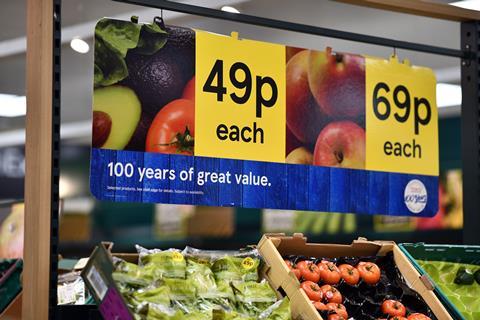
Much ink has been spilled covering the impact of rising inflation on consumer spend. Given the cost of living crisis is likely to get worse before it gets better, this issue won’t be going away anytime soon.
Unfortunately, inflation is a double-edged sword. Surging prices for raw materials or energy will leave suppliers and retailers with little choice but to increase their prices. For brands that pride themselves on being affordable, this will be a bitter pill to swallow.
However, even if they can’t control price increases, they can control how customers react through the use of credible communication. Only recently, bakery chain Greggs successfully defied the odds by posting 15% growth in sales despite having pushed up prices.
Price is one of the key determinants in setting apart a business from competitors in a crowded market. This is especially true in the fmcg sector, which is populated by retailers offering price-matching schemes and running advertising campaigns around affordability.
So retailers will be experienced in promoting seasonal offers, promotional deals and flash sales. However, communicating price increases requires a markedly different approach.
To tackle this issue, it’s first necessary to understand what constitutes a ‘fair price’. Our research has shown this is largely based on the principle of ‘dual entitlement’, whereby a customer simultaneously believes they are entitled to a fair price while the firm is entitled to a fair profit.
So the key in reducing negative reactions to price increases is to ensure both of these categories are met. Our research, which considers the views of several thousand customers across multiple European countries, has identified three strategies to achieve this.
First of all, retailers have to be open about price increases. We have all suffered a shock at the till after finding out the price of our favourite product has been bumped up. Customers value honesty, and have shown to be more accepting of price increases if they are proactively communicated rather than introduced by stealth.
Second, retailers have to offer a credible explanation for the price increase. Higher labour costs, for instance, are perceived as a credible reason to raise prices as it shows retailers care about wages of their employees. Equally, price increases caused by reasons outside the retailer’s control, such as hikes in energy costs, do not negatively affect price fairness perception.
Finally, retailers must offer an ‘exit strategy’. Tying a price increase to an objective cause and pledging to reverse this once that cause is no longer relevant has actually been proven to have a positive effect on customer perceptions.
The coming months will be difficult for consumers and retailers alike. Yet through savvy, honest communication, retailers can maintain the positive relationships they’ve worked hard to develop with their customers.



















No comments yet